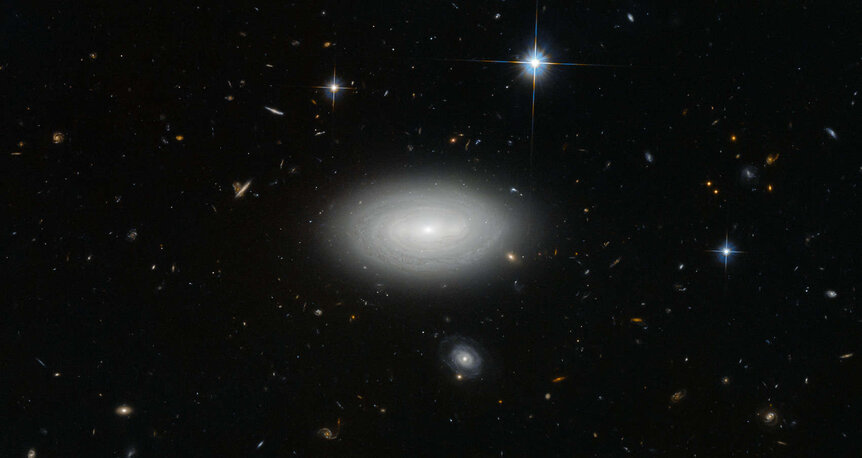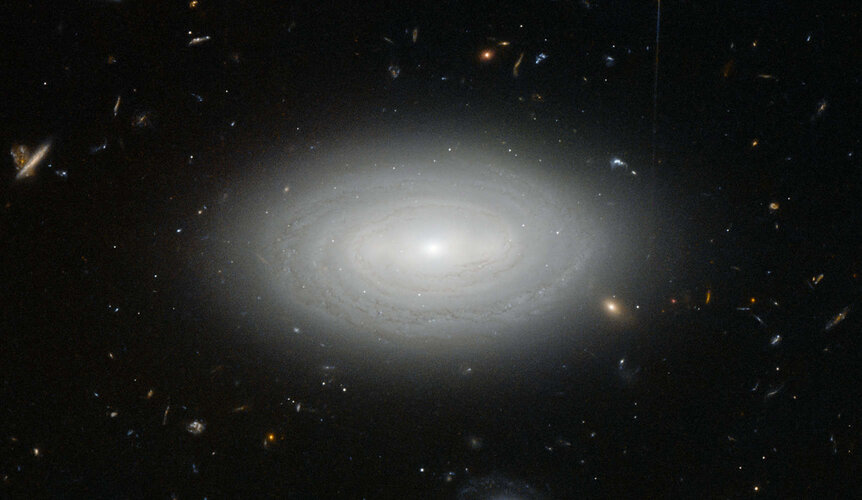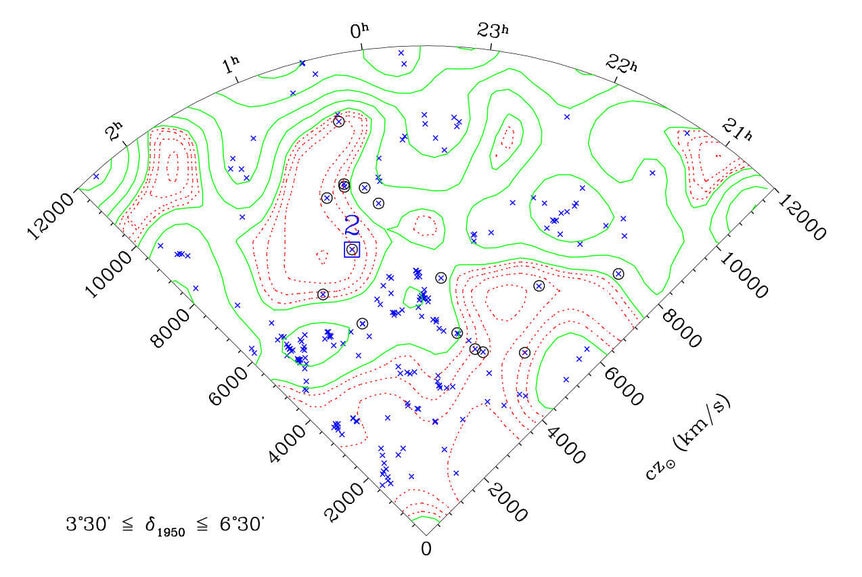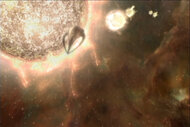Create a free profile to get unlimited access to exclusive videos, sweepstakes, and more!
You think *you're* isolated today? Meet the galaxy MCG+01-02-015
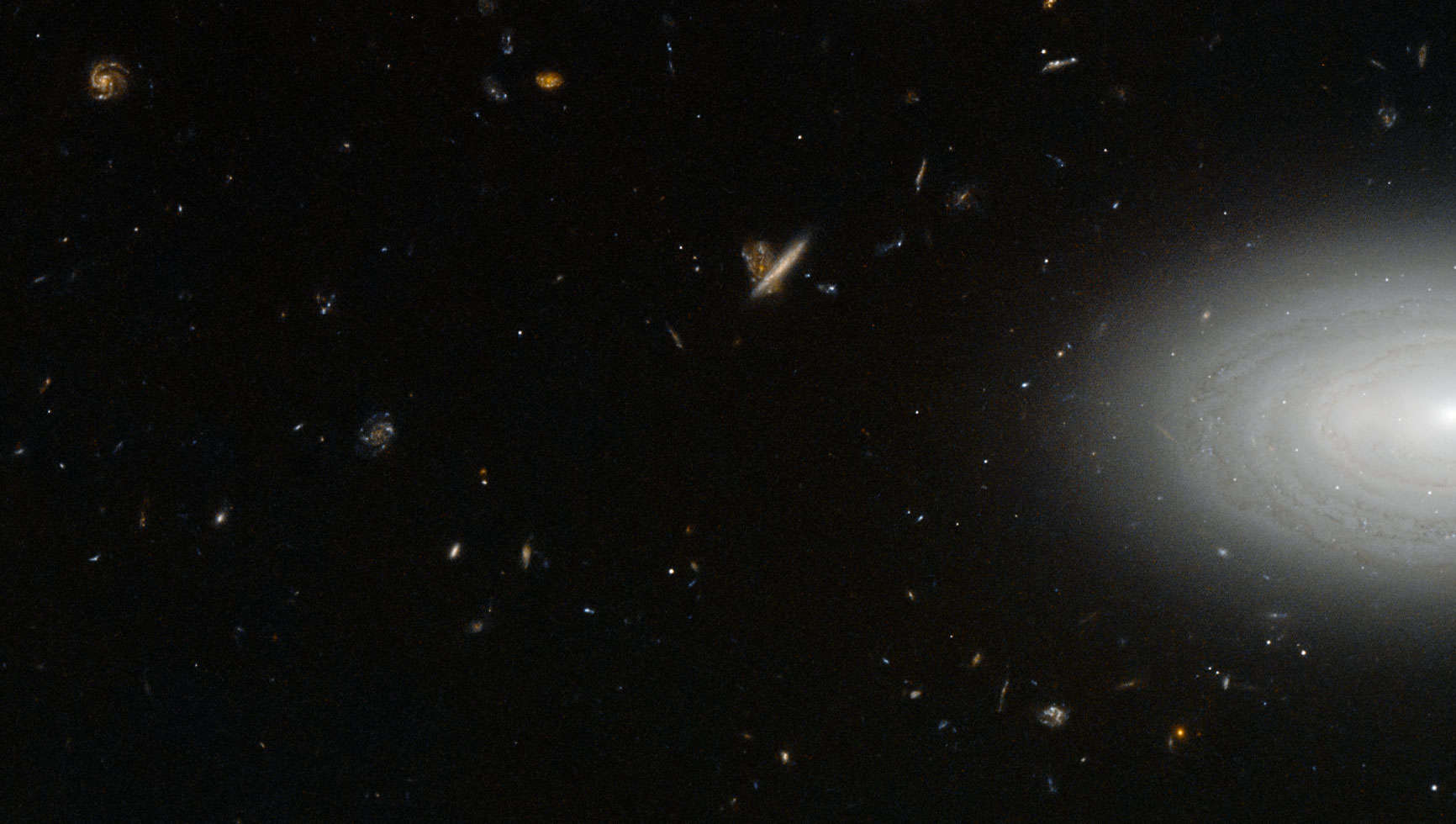
To all my USAian readers, happy Thanksgiving!
Given our current situation — that is, apparently in the third act of a movie that starts off with politicians ignoring scientists and ending with a heroic effort at the last minute to save everyone — I hope you're self-isolating and celebrating the holiday on your own or with people you've already been sequestered with for quite some time.
I know it can be hard. But maybe I can help put some perspective on this. If you think you're isolated, you should see the galaxy MCG+01-02-015.
In fact, you literally should! So let me show it to you:
Oh, it's a lovely one, isn't it? Originally classified as an elliptical galaxy, in this Hubble image you can see it's a barred spiral, a disk galaxy with spiral arms and a rectangularish structure across the middle. The arms are wound pretty tight, which is likely why it was mistaken for an elliptical in lower resolution images.
It appears rather colorless here, but that's mostly because this image only uses two filters instead of three to produce a natural-color photo. What's displayed here as blue is actually from a filter that lets through yellow light, what looks red is actually near-infrared, and green is a mix of the two filters (which produces a color sorta kinda in between the two filters, and is sometimes used to fill out the RGB colors of a photo when only two filters are used).
The galaxy looks like it enjoys the company of other objects; you can see a handful of stars around, and dozens of smaller galaxies. But that's an illusion. MCG+01-02-015 is about 330 million light years away, and the stars are in our own Milky Way; we look past them to see intergalactic space. And those other galaxies are nowhere near MCG+01-02-015! They just appear to be due to a lack of distance perception; they are much farther away. This is like looking out a window past a nearby tree to a distant mountain. They look like they're next to each other, but that's just perspective.
In fact, MCG+01-02-015 is all alone in space. It sits inside what's called a void, a vast volume of space where there are few to no galaxies. You may be familiar with galaxy clusters and superclusters, which are gravitationally bound collections of huge numbers of galaxies, hundreds or thousands of them. A void is the exact opposite of that.
The map above is a little odd, but it's a common way for astronomers to show structures in space. It shows a slice of the Universe with Earth at the vertex. Left to right is east to west across the sky, and distance from the Earth increases as you move away from the vertex. It's measured in the odd units of recession velocity — the Universe is expanding, and the farther away from Earth a galaxy is, the faster the galaxy appears to move away from us (the Xs are various galaxies). MCG+01-02-015 is moving away from us at about 7,200 km/sec, and in the map it's labeled with a big "2." Green lines are contours where there are lots of galaxies, red lines where there are few. So MCG+01-02-015 is located about 2/3rds of the way from the center of a void to its edge.
The void is called the Pisces-Perseus void, and it's huge, over two hundred million light years across. This means that there's really no other galaxy near MCG+01-02-015 at all. If we lived in that galaxy, no other galaxy would be visible to the eye, and you'd need a pretty good telescope to see any at all. I wonder how that would change the development of the science of cosmology for a civilization?
It's a little weird that such a big galaxy would be in the void at all. This is seen in many voids, but it's not clear why they're there. In fact, we're not exactly sure why voids exist in the first place. It's thought that early in the Universe's history (like really early, just hundreds of thousands of years after it formed) it was a little lumpy, and the lumps grew to form clusters, and the underdense regions between them became voids. But the details are a bit sketchy.
That's why this lonely galaxy was observed in the first place, to determine its history. It may be that such galaxies have formed relatively recently, and are much younger than galaxies like our Milky Way, which is roughly 12 billion years old.
So if it is lonely it hasn't been so for long, cosmically speaking. Still, to a human, a few billion years is a bit of a stretch. With luck, hard work, personal responsibility, and good ol' science, we can hope our own isolation may be over in only a few months.
I hope that gives you a sense of perspective. It certainly does for me! And for that, I give thanks.
